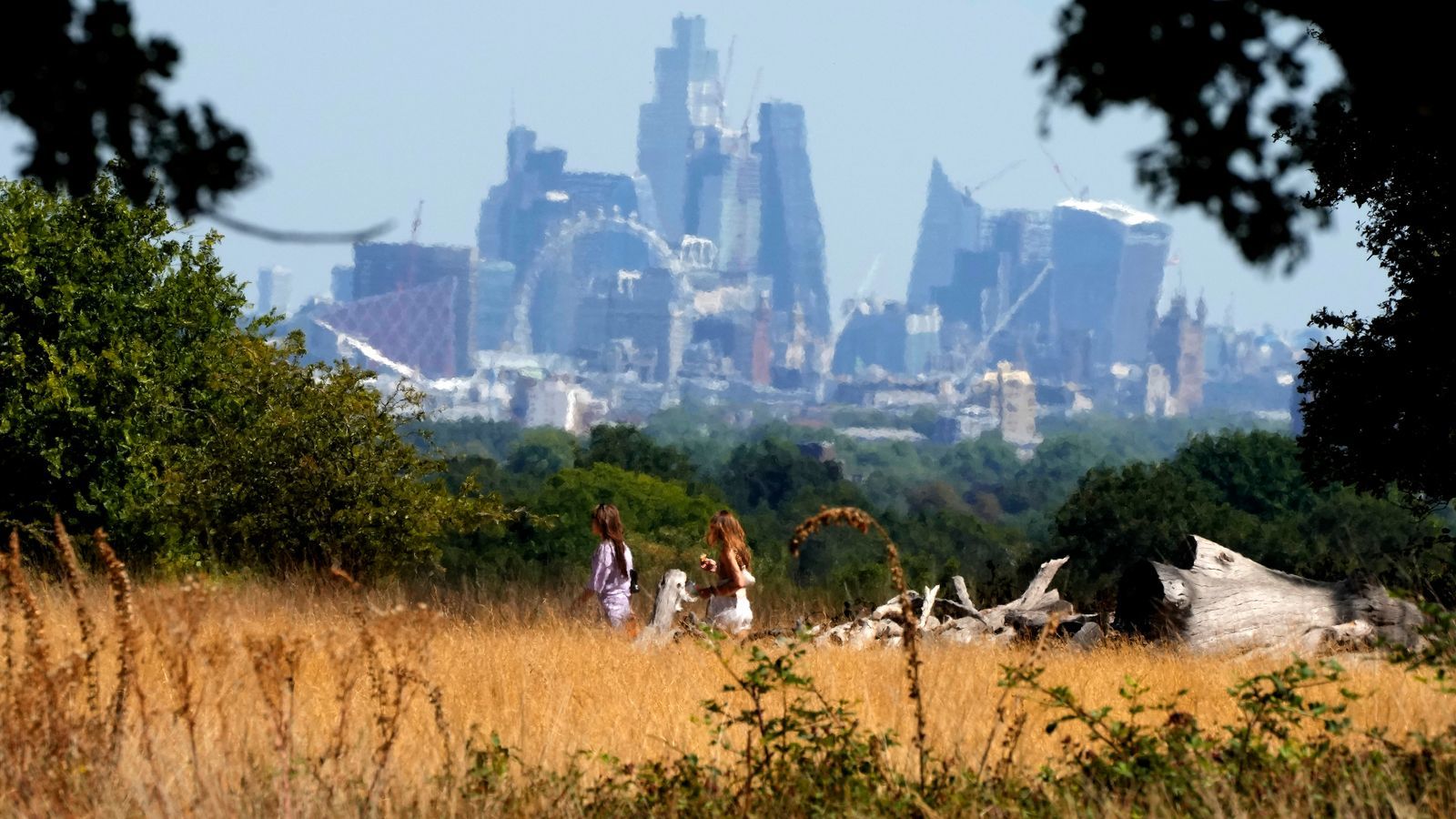
El Nino: What is it and how does it impact the weather closer to home?
The United Nations has warned of record-breaking heat because of the weather phenomenon El Nino.
However, a Sky News weather expert says we're unlikely to see the effects of a new El Nino in the UK this year.
So what is it and how will it affect us on a global scale?
UN warning
The United Nations has warned that higher global temperatures and possibly new heat records could be seen due to climate change and the return of the El Nino weather phenomenon this year.
For three years, the opposite of El Nino - the cooling La Nina weather pattern - has been dominant in the Pacific Ocean.
This has lowered global temperatures slightly - but 2023 will see the return of the warmer counterpart.
Wilfran Moufouma Okia, head of the UN's World Meteorological Organization (WMO), said there was no current estimate of the impact El Nino will have on temperatures.
"El Nino will fuel the temperature globally," he said.
"We feel the effect of El Nino temperatures globally with a slight delay."
The WMO said it could not predict the strength or duration of El Nino.
So far, the world's hottest year on record is 2016. El Nino was particularly strong that year.
The World Meteorological Organisation has warned the global temperature is set to break a key limit for the first time within the next five years - and there is a 98% chance of the hottest year on record being broken during that time.
Dr Leon Hermanson, of the Met Office Hadley Centre, said the record will likely come from a combination of greenhouse gases and El Nino.
What is El Nino?
El Nino is part of a natural cycle, according to Sky News weather presenter Jo Wheeler.
She said: "ENSO - the El Nino-Southern Oscillation - warms and cools the tropical Pacific in a rotation that lasts between one and three years, impacting weather conditions across the world.
"Both El Nino and La Nina have defining characteristics, with El Nino associated with warmer than normal ocean surface temperatures in the central and eastern tropical Pacific - which leads to rainier cooler conditions in the south and warmer conditions in parts of the north.
"La Nina represents a cooling effect."
With El Nino, the equatorial Pacific Ocean typically gets around three degrees warmer than usual.
With La Nina, it's three degrees colder.
As Jo says, they both set off a series of chain reactions for weather around the world.
The El Nino name - which means "the boy" in Spanish - is said to have originated from "El Nino de Navidad," which translates to The Christmas Child.
It's said that centuries ago Peruvian fishermen named the weather phenomenon after the newborn Christ.
It probably won't surprise you that La Nina - El Nino's opposite - means "the girl".
A major El Nino event usually occurs every three to seven years and could last for several months at a time.
The strongest El Nino episodes were in 1997 to 1998 and 2015 to 2016.
When will the return of El Nino affect UK weather?
So, does El Nino increase the chances of another record-breaking summer here in the UK?
In 2022, the UK recorded temperatures above 40C for the first time ever, where much of England remained under the Met Office's first-ever red warning.

El Nino often peaks during December, the Met Office said on its website.
But as it's in the Pacific, the knock-on effects can take a while to noticeably impact the weather around the world.
So, despite the UN warnings about the return of El Nino this year, we won't be affected for a while.
According to Jo Wheeler: "El Nino will not affect the summer weather here - it'll arrive too late.
"It might affect next year though - if it happens."
For now, La Nina still dominates - with its cooling of the oceans and associated effects.
The Sky News weather presenter added a switch back to El Nino could mean a hotter than usual 2024 in the UK though - and a frostier than usual winter beforehand.
She said: "The WMO suggest that El Nino will arrive by the end of summer which would increase the chances of 'hotter than normal' temperatures in 2024 but also that the preceding winter season will be frosty."
Why does El Nino affect weather in the UK and Europe?
El Nino matters for us because of another key weather phenomenon - the jet stream.
The jet stream is a band of strong eastward winds that carries rain across the Atlantic, often referenced in weather forecasts.
During El Nino winters, northern Europe can be colder and drier, with southern Europe getting more rain - because the jet stream shifts course.
On the flip side, El Nino summers in the UK can be hotter and drier. La Nina summers are often wetter.
However, the Met Office admits these are not hard and fast rules.
Scientific understanding of how El Nino and La Nina - as well as other natural temperature cycles over the world's big oceans - affect the weather across the world, is always evolving.










